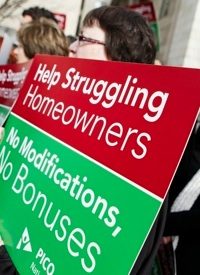
After six straight months of gains in consumer spending the April numbers showed no change from March, according to the Commerce Department. This was a surprise to some who have been tracking such things as the University of Michigan’s index of consumer confidence (higher), consumers’ expectations on the economy over the next 12 months (higher), moderate real job creation (higher), savings rate (higher) and manufacturing activity (higher).
Others remained sanguine, holding that “We do not expect household spending to flatline in the coming months,” according to Michelle Girard, senior economist at RBS in Stamford, Connecticut.
Consumers themselves, however, are not a happy lot. According to Rasmussen Reports, only 35 percent of Americans are planning to take a summer vacation this year, and those who are, aren’t planning on spending as much as they have in the past. Two out of three who vacationed last year plan to cut back on their travel expenses. College graduates have discovered that on-campus recruiting at business schools this year is off by 65 percent, and that when jobs are offered, the starting salaries are lower than last year. Andrew Sum, economics professor at Northeastern University, reports that almost half of those graduating this spring are only finding jobs that don’t require a college degree.
Gary North’s analysis of the most recent report from the Bureau of Labor Statistics shows that the number of new job openings is being matched by new layoffs: “The hiring equals [the] firing.” North continues: “Now there are millions of workers [re-]entering the job market. They had given up hope. They are now looking for work — any work. These people will take anything.” There may be a nascent recovery, “but the workers will be in limbo for at least a year.”
A number of other polls and surveys show the economy, and consumers’ attitudes, are in fact making very little measurable progress. On May 20th, Business Week magazine predicted “that the number of Americans filing for jobless benefits will show a drop … a small decrease … would indicate [that] the job market is improving.” When the numbers came in, they showed an increase of unemployment claim filings of 25,000.
Others show that two Americans out of every three believe that the economy is still in a recession and that the overall levels of economic confidence are significantly lower than they were following the 9-11 terrorist attacks. Rasmussen reported that at the end of February, “voter confidence in the country’s current course fell to 25 percent, the lowest finding since just before President Obama took office in January, 2009. At the same time, 71 percent felt the United States was heading down the wrong track, the highest negative assessment in that same time period.” When it comes to the economy, “most voters continue to believe the legislators have little idea of what they’re doing.” When asked directly about the current state of the economy, those surveyed were split, with 37 percent believing that the economy will be stronger a year from now, and 37 percent believing it will be weaker.
The Economic Cycle Research Institute asked:
What are ECRI’s leading indexes saying about the timing of this pullback? Quite simply, that in line with the first quarter’s downshift in GDP growth from a six-year high, income and sales growth will also start easing in the next few months.
Managing Director Lakshman Achuthan at ECRI said that “The downturn…has recently intensified, so it should be no surprise when U.S. economic growth slows noticeably in the months ahead.”
The housing “overhang” continues to dampen consumers’ enthusiasm. From ZeroHedge comes this insight:
There are 140 million personal residences in the US. Today, there are 26 million homes either directly or indirectly for sale. According to a survey by Zillow.com, a real estate appraisal website, 20 million homeowners plan to sell on any improvement in prices. Add to that 4 million existing homes now on the market, 1 million new homes flogged by companies like Lennar (LEN) and Pulte Homes (PHM), and 1 million bank owned properties. Another 8 million mortgage owners are late on their payments and are on the verge of foreclosure, bringing the total overhang to 34 million homes….
Add it all up, and there is a massive structural imbalance in residential real estate that will take at least a decade [emphasis added] or more to unwind. We could be looking at a replay of the same 26 year period from 1929 to 1955 when prices remained flat, and we are only 3 years into it! A second down leg in the real estate market seems a no brainer to me, as is the secondary banking crisis that follows.
The same thing holds true with commercial real estate, according to North: “The banks are facing at least another two years of declines in commercial real estate … the declining CRE (commercial real estate) market is an albatross around the neck of the economy. It is keeping small business from growing and new businesses from beginning.”
All of this is resulting in “debt-induced stress,” as reported at Yahoo.com. Even though consumers are cutting their debt load “at the fastest rate in more than six decades,” people still carry around $44,000 in debt, including mortgages, credit cards, car loans, and other consumer debt. This compares to the per capita debt in 1982 of (adjusted for inflation) only about $14,000.
Since so much hinges on attitudes, expectations, and confidence in the future, it’s no wonder that the “wait and see” attitude of consumers continues. Until certain issues are resolved, including continuing bailouts of foreign governments, the new financial regulation bill, the primaries and especially the mid-term elections, it remains unlikely that there will be any substantive change in either the economy or in consumer expectations.
Photo: AP Images



